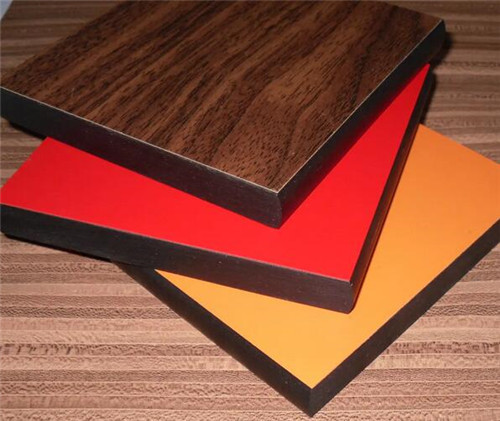Introduction
Compact laminate boards have revolutionized the way we approach interior surfaces that demand robustness and style. They are extensively utilized in both residential and commercial settings due to their impressive qualities. However, the evolution of these boards has led to the emergence of two distinct generations, each offering its own set of advantages and characteristics. In this article, we'll delve into the differences between the first and second generation compact laminate boards and help you understand which one suits your project's needs best.
Understanding Compact Laminate Boards
What Are Compact Laminate Boards?
Compact laminate boards are engineered materials created through the layering and compressing of multiple sheets of kraft paper impregnated with phenolic resin. The result is a sturdy, high-density panel that boasts exceptional strength and resistance to various environmental stressors. These boards are commonly used in spaces where durability and hygiene are paramount, such as hospitals, schools, kitchens, and public restrooms.
Applications of Compact Laminate Boards
Compact laminate boards find their utility in an array of applications. From kitchen countertops to bathroom partitions, they offer a surface that can endure heavy use and maintain its integrity. Their remarkable resistance to moisture, impact, and abrasion makes them ideal for tabletops, work surfaces, cabinetry, and wall claddings.
First Generation Compact Laminate Boards

Composition and Structure
The first generation of compact laminate boards follows a traditional composition that involves layering kraft paper sheets soaked in phenolic resin. This is then subjected to high-pressure compression to create a solid, dense panel. However, the thickness of these boards can sometimes limit their design versatility.
Properties and Limitations
First-generation boards possess commendable strength and durability, making them suitable for a range of applications. However, their limited thickness options and relatively basic design choices can be constraining for certain projects. Additionally, the absence of advancements in resin technology can result in boards that are prone to color fading over time.
Second Generation Compact Laminate Boards

Innovations in Composition
The second generation of compact laminate boards builds upon the foundation of the first, introducing innovative approaches to composition. These boards incorporate multiple layers of kraft paper impregnated with not only phenolic resin but also melamine resin. This combination enhances the board's structural integrity and opens up new possibilities for design.
Enhanced Performance and Durability
The inclusion of melamine resin not only improves the overall durability of the board but also makes it highly resistant to color fading and wear. Second-generation boards come in a wider range of thicknesses, allowing for greater flexibility in design and application.
Distinguishing Factors
Comparing Physical Characteristics
When comparing the physical characteristics of the two generations, second-generation compact laminate boards offer superior performance. They exhibit enhanced impact resistance, better color retention, and increased longevity compared to their first-generation counterparts.
Design and Aesthetic Options
Second-generation boards come with an expanded array of design options. They can mimic various materials, textures, and patterns, giving designers and architects greater freedom to create unique and visually appealing spaces.
Appearance difference
The difference between the two is evident at the plate edges.The edge of the anti-double special plate is delicate, the second-generation anti-double special plate is rough, and the feel is poor.
Performance differences
Properties such as moisture resistance, water resistance, impact resistance and corrosion resistance. According to the different models, the performance of the second generation of anti-double special board is also different.
Choosing the Right Board for Your Project
The choice between the first and second generation of compact laminate boards largely depends on the specific requirements of your project. If you're aiming for classic durability with a more straightforward design, first-generation boards might be suitable. On the other hand, if you desire versatility, advanced aesthetics, and improved performance, second-generation boards are the way to go.

Maintenance and Longevity
Both generations of compact laminate boards are relatively easy to maintain. Regular cleaning with mild detergents is usually sufficient to keep them in optimal condition. However, due to their improved resistance to wear and fading, second-generation boards tend to retain their appearance for a longer duration.
Cost Considerations
It's important to note that second-generation compact laminate boards, with their enhanced features and design options, often come at a slightly higher cost compared to the first-generation boards. The investment, however, can be justified by the extended lifespan and improved aesthetics they bring to your space.
Environmental Impact
When it comes to sustainability, both generations of compact laminate boards are typically composed of renewable materials and are recyclable. However, the advanced production techniques and longer lifespan of second-generation boards contribute positively to their overall environmental impact.
Future Trends in Compact Laminate Board Technology
As technology continues to advance, we can expect further innovations in compact laminate board manufacturing. This might include the incorporation of even more sustainable materials, smarter design options, and enhanced performance characteristics.
Conclusion
In the realm of compact laminate boards, the transition from the first generation to the second signifies a significant leap in terms of performance, design possibilities, and durability. The choice between the two depends on your project's specific needs and budget considerations. Whichever generation you opt for, these boards are sure to elevate the functionality and style of your space.
English
Русский
العربية
Français
Español
Português
Deutsch
italiano
日本語
한국어
Nederlands
Tiếng Việt
ไทย
Polski
Türkçe
አማርኛ
Bahasa Melayu
தமிழ்
Filipino
Bahasa Indonesia
magyar
Română
Монгол
қазақ
Српски
हिन्दी
فارسی
Kiswahili
Slovenčina
Slovenščina
Svenska
українська
Ελληνικά
Suomi
Հայերեն
עברית
اردو
Shqip
বাংলা
Hrvatski
Afrikaans
Māori
සිංහල
Oʻzbekcha
latviešu
Беларуская мова
Bosanski
Български
ქართული
Lietuvių
Malti
Runasimi





